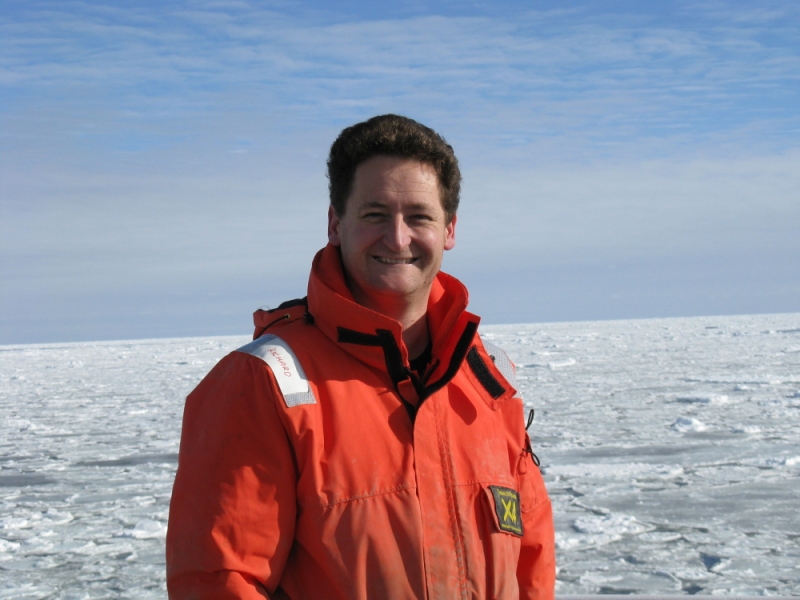Tangaroa has made excellent progress south after leaving Wellington last Thursday. We are due to cross 60 degrees south about 10 am NZDT this morning (21:00 UTC 1 Feb). This is a significant milestone as it marks the start of the "real" Antarctic, as well as entry into the Commission for the Conservation of Antarctic Marine Living Resources (CCAMLR) zone.
As we are crossing the polar front, the level of oceanographic work has stepped up with underway conductivity-temperature-depth (CTD) profiles every couple of hours and acoustic doppler current profiler (ADCP) data collection in addition to the suite of underway measurements of surface waters. We are also towing a continuous plankton recorder and recording multifrequency acoustic data. To date we have deployed four drifters to measure surface currents and two ARGO floats, with more planned deployments in the next two days.
The Australian Antarctic Division 'whale team' is deploying sonobouys every 6 hours to listen for whales. After some initial teething problems with VHF radio interference, we moved one of the receiving antenna and are now getting good radio range. As predicted, the first Antarctic blue whale sounds were heard over the weekend from well to the south of us. As we get closer we should be able to get a better fix on their location.
We are due to arrive at the Balleny Islands to start the humpback whale work on schedule early on Wednesday 4 February. We are entering the ice zone now so will slow down while steaming at night. There are plenty of people looking out the windows hoping to spot the first iceberg of the trip. Safety drills have taken on an extra intensity, with full cold-weather gear now required.
Onboard staff are all well and breaking into their shifts and sampling routines. The Blake/NIWA Ambassadors in particular are coping admirably with their first sea voyage. After 3 days of smooth sailing, we are currently experiencing 30 knots of westerly wind and 3-4 m swells - a relative gentle introduction to the Southern Ocean!

